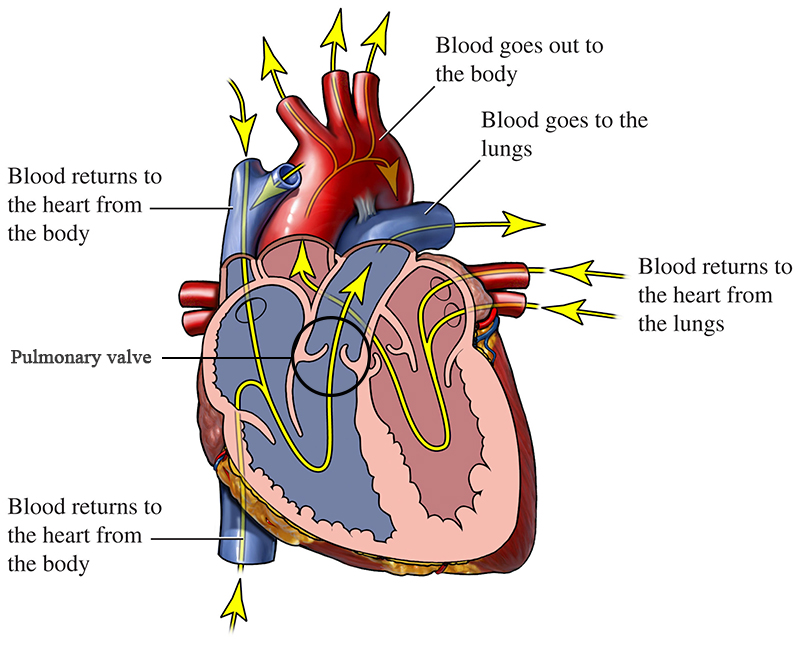Dallas
214-456-2333
Fax: 214-456-2714
Plano
469-303-4300
Fax: 469-303-4310
Park Cities
469-488-7000
Fax: 469-488-7001
Prosper
469-303-5000
Fax: 214-867-9511
Request an Appointment with codes: Cardiology (Heart Center)
Our internationally recognized heart specialists have extensive expertise in treating children with pulmonary valve stenosis, a heart condition that some babies are born with. Using medications, minimally invasive procedures and heart surgery, we provide expert care for children of all ages and sizes – even those whom other hospitals can’t treat. We work closely with your child’s doctor to provide care that helps your child have a healthy, active life.
214-456-2333
Fax: 214-456-2714
469-303-4300
Fax: 469-303-4310
469-488-7000
Fax: 469-488-7001
469-303-5000
Fax: 214-867-9511
Request an Appointment with codes: Cardiology (Heart Center)
With typical pulmonary stenosis, the pulmonary valve doesn’t develop as it should in a baby in the womb. In a typical heart, the pulmonary valve has three flaps (leaflets) that open and close with each heartbeat. The valve helps send blood from the heart through the pulmonary artery to the lungs to pick up oxygen.
With pulmonary stenosis, the abnormal valve might be stiff, too narrow or too small, preventing it from opening and closing properly. This condition forces a baby’s heart to pump harder to send enough blood to the lungs, straining the heart over time.

Pulmonary stenosis is a congenital heart disease, which means that a baby is born with a condition that affects the structure of their heart. This condition occurs in the right side of the heart, which affects blood flow to the lungs.
The types of pulmonary stenosis include an abnormal pulmonary valve and other problems that partially restrict blood flow from the heart to the lungs. Each type has a different level of stenosis (narrowing).
The pulmonary valve has thickened and/or narrowed leaflets that don’t open and close the way they should.
A child’s heart has a narrowed area in the pulmonary artery, just above the pulmonary valve.
Thickened heart muscle that has developed below the pulmonary valve can cause narrowing in that area.
As the pulmonary artery leaves the heart, it branches into two vessels, one carrying blood to each lung. With peripheral (branch) pulmonary stenosis, one or both branches are narrowed.
Children at any age may show signs or experience symptoms such as:
Signs and symptoms in infants (up to age 1 year) may include:
The signs and symptoms of pulmonary valve stenosis vary depending on how much the blood flow is blocked. With severe blockage, the signs are noticeable shortly after birth. With less blockage, children may experience no or mild signs or symptoms, or symptoms might not appear until later in life.
Doctors sometimes detect signs of pulmonary valve stenosis, using fetal imaging, in a baby before birth if the blockage is severe. In most cases, we diagnose the condition after birth in newborns or in older children when their primary care provider hears a heart murmur and refers them to us.
At Children's Health℠, our heart specialists begin with a thorough evaluation and physical exam, listening carefully to your child’s heart and checking their blood oxygen levels. We ask you about your child’s personal and family medical history, including whether any family members have had a heart murmur.
To confirm a diagnosis and plan treatment, we may recommend one or more tests, such as:
Pulmonary stenosis occurs when parts of a baby's heart don't form properly in the womb. This congenital heart disease usually occurs by chance, and the reasons are unknown. Nothing that a mother did or didn't do during her pregnancy causes pulmonary stenosis.
Our pediatric cardiologists work with you to decide on your child’s treatment options based on the severity of the stenosis and their symptoms, their overall health and other factors. If the condition is mild, your child might not need treatment right away or might need only medications to manage symptoms. Our cardiologists partner with your child’s doctor to monitor their health for changes that may require treatment.
For more severe stenosis and symptoms, a child may need a procedure to treat the pulmonary valve. Most often, we can treat pulmonary valve stenosis with catheterization techniques, including:
In a few cases, children may need heart surgery to repair pulmonary stenosis. Our skilled pediatric heart surgeons have expertise in:
Children who have pulmonary valve stenosis need to see a cardiologist for lifelong, follow-up care. Specialized care for congenital heart disease monitors your child’s health for changes that may need treatment.
If your child had balloon dilation, they might need to have the procedure again later in childhood to stretch the valve wider as they grow.
If your child received a replacement valve, they often need to have that valve replaced again in adulthood. The replaced valve doesn’t grow as your child grows, so your child may need a larger pulmonary valve.
Other congenital heart diseases can occur with pulmonary valve stenosis, so your child might need a catheterization procedure or heart surgery to treat a related condition.
Most children can participate in normal activities after recovering from treatment for pulmonary valve stenosis. Your child’s cardiologist can provide specific recommendations for your child’s level of activity.